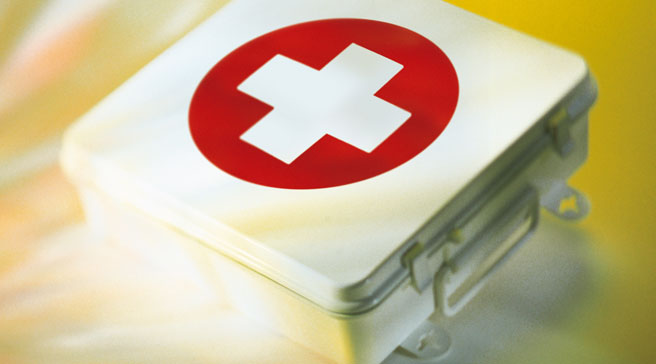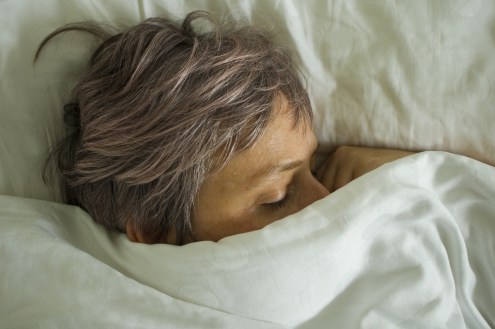10 ways to cope with pain
Whether you’ve got a migraine, PMT or backache, painkillers aren’t the only solution. Viki Wilson explores the alternatives

1. Change your diet
According to nutritionist Patrick Holford, infusing your diet with a combination of natural painkillers can go a long way to reducing pain without conventional analgesics. ‘Curcumin, found in turmeric, works as well as anti-inflammatory drugs,’ he says. ‘Other foods, such as red onions, red wine, tea, grapefruit, broccoli, squash, red grapes, cranberries and citrus fruits, contain quercetin, are known to inhibit inflammation. Omega-3 fats, found in foods such as salmon, flax seeds and walnuts, are also proven painkillers. But the real magic comes when you take all these together.’
2. Have acupuncture
The National Institute for Health and Clinical Excellence recently made acupuncture available on the NHS for patients in need of pain relief. ‘There are various schools and approaches,’ says acupuncturist Garry Trainer. ‘The Eastern school involves balancing the body’s flow of yin and yang energy by inserting fine needles into acupressure points in the body. I take a more Westernised approach, manipulating the body’s response to pain by inserting a needle into the centre of the painful area. It sounds horrific, but it relieves pain rather than adding to it. Inserting the needles stimulates the central nervous system, so the pain messages to the brain are diffused and the pain is dulled. The needle also stimulates blood flow to the area, reducing inflammation and easing muscle spasms, and stimulates the production of endorphins, the body’s natural painkillers.’ If you’re afraid of needles, acupressure works on a similar basis.
3. Get a gadget
The Ancient Greeks used to stand on electric eels to relieve pain but, thankfully, modern versions of the technique are more sophisticated. Like electric eels, microcurrent therapy in the form of transcutaneous electrical nerve stimulation (TENS) sends a very low-level electrical current through the skin, which blocks pain messages being sent through the nervous system. The PainWave pen works in a similar way, using pulsed electromagnetic field therapy technology, and has been shown to reduce pain in studies at the Trier Clinic in Germany.
4. Buy new shoes
Several studies have linked high heels and narrow shoes with foot pain and lower-back pain, and one Harvard study even showed that our choice of shoe can increase the risk of osteoarthritis. Negative Heel Technology advocates shoes with a slightly negative incline of 3.7 degrees in the sole, which helps realign spine and pelvis and thus ease back pain. ‘The most common cause of back pain is poor posture,’ says osteomyologist Quincy Rabot. ‘Carrying your weight too far forward causes the pelvis to tip forward, the knees to hyperextend and rotate inwards and the head to push forward. This can cause pain in the back, hip and knee joints, neck and even head. Wearing shoes that correct this posture can help alleviate the pain.’ Try Earth Footwear.
5. Try Hanna Somatics
A mind-body technique that is growing in popularity is Hanna Somatic Education, created by Dr Thomas Hanna in the 1970s. ‘Injuries and stress cause us to automatically tighten up in pain or shock,’ says Hanna Somatic educator Jonathan Hunt. ‘Tension generates more pain through muscle fatigue, joint compression and nerve entrapment. What is at the heart of this therapy is that the brain is the control centre for the muscles, not the muscles themselves. During sessions, clients are guided through a variety of slow, mindful movements that help them increase awareness of tension and movement, so they learn to reduce pain and manage stress.’
6. Picture your pain away
Try this daily visualisation technique suggested by Dr James Gordon of the Center for Mind-Body Medicine in Washington DC. Sit quietly, then start deep breathing, in and out with your eyes closed and your stomach ‘soft’. Let that softness spread from your belly into your legs and upper body, breathing deeply. Now start your visualisation journey towards somewhere you feel totally comfortable, for example walking down a road, or crossing a meadow. Once you reach the place you feel at ease, build up an image that is all about your pain diminishing. For example, with arthritis you might envisage someone coming along with an oil can, and the rough edges of the joint smoothing out.’
7. Get injections of your own blood
It sounds a pointless exercise, but platelet-rich plasma therapy (PRP) has been popular in the US for decades. A study by Dr Allan Mishra of Stanford University found patients receiving PRP reported a 60 per cent reduction in pain. ‘Platelets cause blood to clot if you have a cut,’ says Dr Ralph Rogers, who practises PRP at the London Orthopaedic Clinic. ‘But they also stimulate the “healing cascade” body process, where other cells repair tendon, ligament or muscle damage.’
8. Hypnotise yourself A study at Harvard found hypnosis was effective in reducing the pain of surgery. ‘It works by focusing the mind away from the pain,’ says hypnotherapist Mark Tyrrell, who suggests this technique. Tag your pain with a colour, such as red, or a texture — ‘jagged’, say. Or imagine it as a number out of 10. Take it out of context, then imagine it diminishing — moving from red to a calm blue, becoming smoother, or a lower number.
9. Listen to music An hour a day of Lady Gaga may not seem an obvious way to soothe pain, but a recent study of 60 patients at the Cleveland Clinic in Ohio found that ‘listening to music, regardless of whether it was the patient’s own choice or ours, had a statistically significant effect, reducing pain, depression and increasing feelings of power,’ says researcher Dr Sandra Siedlecki.
10. Get moving
‘The human body was designed to be in motion, no matter what state of health you’re in,’ says exercise psychologist Sal Fichera. ‘If you let your body become inactive, you will let your body degenerate.’ This can lead to other problems, such as diminishing bone density and depression. Regular exercise, however, can help keep joints and muscles flexible and strong, and mean we’re better able to deal with pain, thanks to the endorphins released when we exercise. Photograph: Comstock








